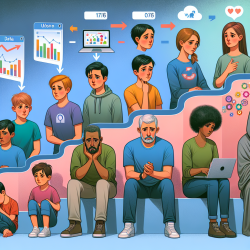In the ever-evolving landscape of special education, the challenges of staffing shortages and burnout are more pressing than ever. As a Special Education Director, I've witnessed firsthand the toll these issues take on our educators, therapists, and ultimately, our students. It's a cycle that not only impacts the quality of education but also the well-being of our dedicated staff. In seeking solutions, one innovative approach has stood out: virtual therapy.
Virtual therapy has emerged as a transformative solution, offering a flexible, efficient, and effective way to address the gaps in service delivery caused by therapist shortages. This model not only supports the sustainability of special education programs but also alleviates the burnout experienced by our in-house staff by redistributing the workload in a more manageable way.
- Accessibility and Flexibility: Virtual therapy breaks down geographical barriers, allowing schools to connect with specialized therapists from across the country. This accessibility means that students can receive timely and consistent support, regardless of local staffing constraints.
- Reduced Burnout: By integrating online therapy services, schools can alleviate the overwhelming caseloads that contribute to staff burnout. This model enables therapists to work from home, offering a better work-life balance and reducing the stress associated with commuting and managing back-to-back sessions.
- Quality Services: Online therapy jobs attract a diverse pool of skilled professionals who are adept at delivering high-quality services via digital platforms. These therapists are equipped with a variety of tools and resources that can be tailored to each student's needs, ensuring personalized and effective interventions.
However, the transition to virtual therapy requires thoughtful consideration and planning. It's essential to partner with a reputable provider that understands the unique needs of special education students and can offer a seamless integration into existing programs. TinyEYE, as a leader in online therapy services, offers schools the opportunity to bridge the gap in service delivery through innovative solutions that prioritize student outcomes.
For special education funding agencies, the adoption of virtual therapy represents a strategic investment in the future of special education. It's a solution that not only addresses immediate staffing shortages but also builds a more resilient and adaptable service delivery model. By supporting the shift towards virtual therapy, funding agencies can play a crucial role in ensuring that all students have access to the quality support they need to thrive.
As we navigate the challenges of the present, it's clear that virtual therapy offers a path forward. It's a solution that benefits students, educators, and therapists alike, fostering a more sustainable and effective special education ecosystem. I encourage my fellow educators and funding agencies to consider the potential of virtual therapy as a step towards a brighter future for special education.










